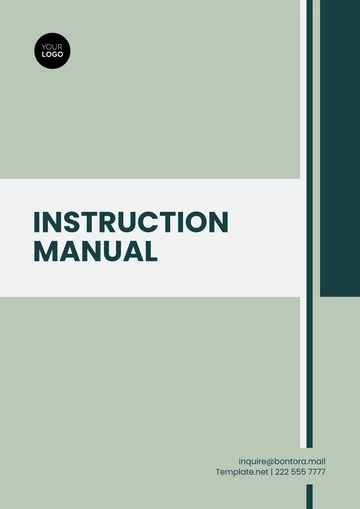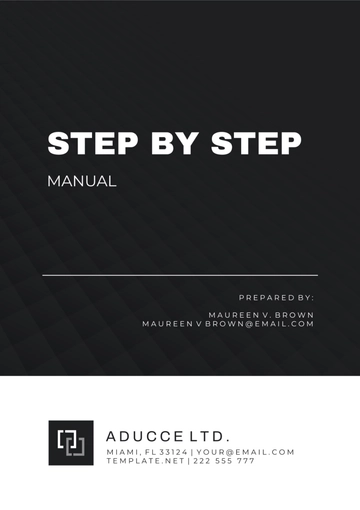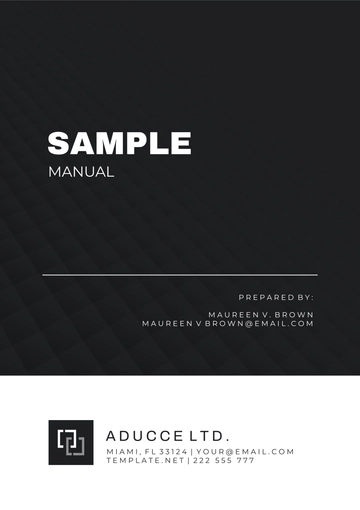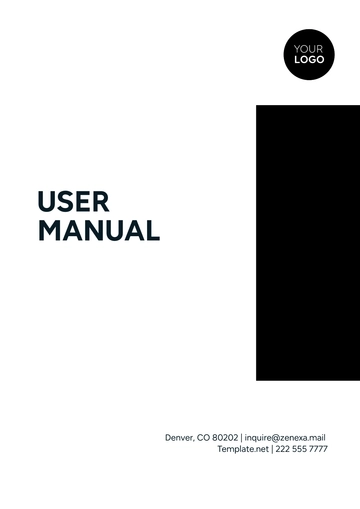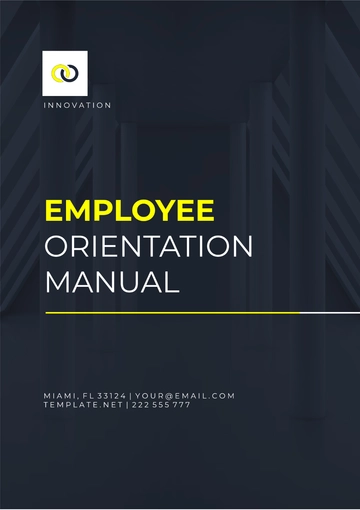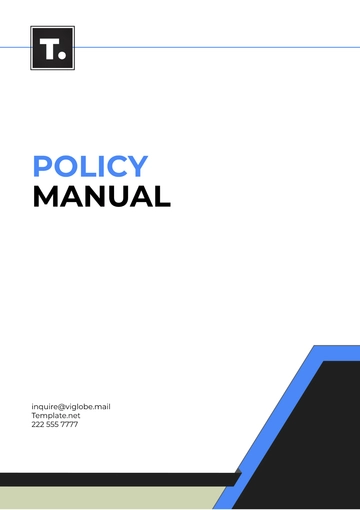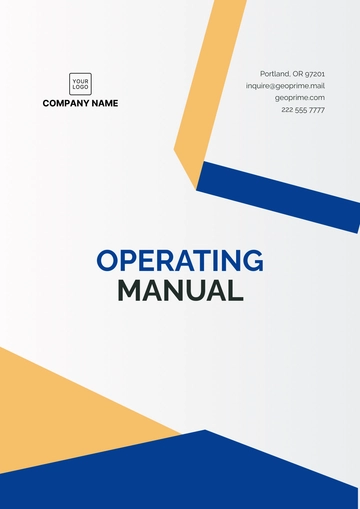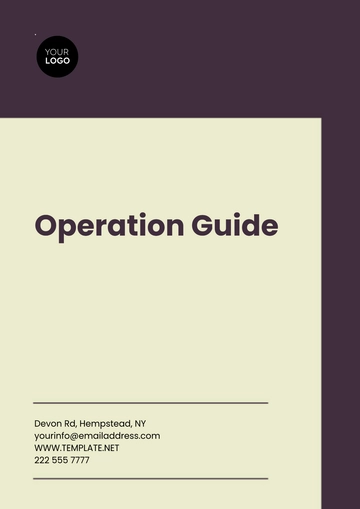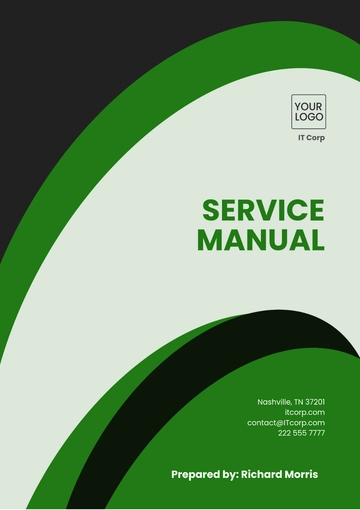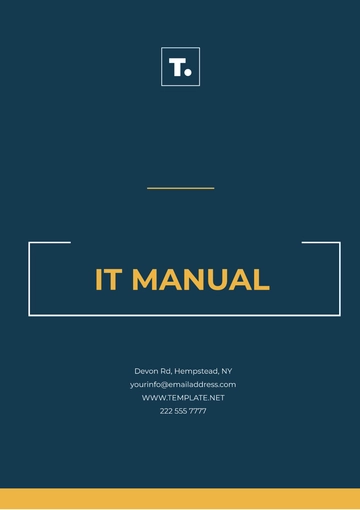Free Email Marketing Training Manual
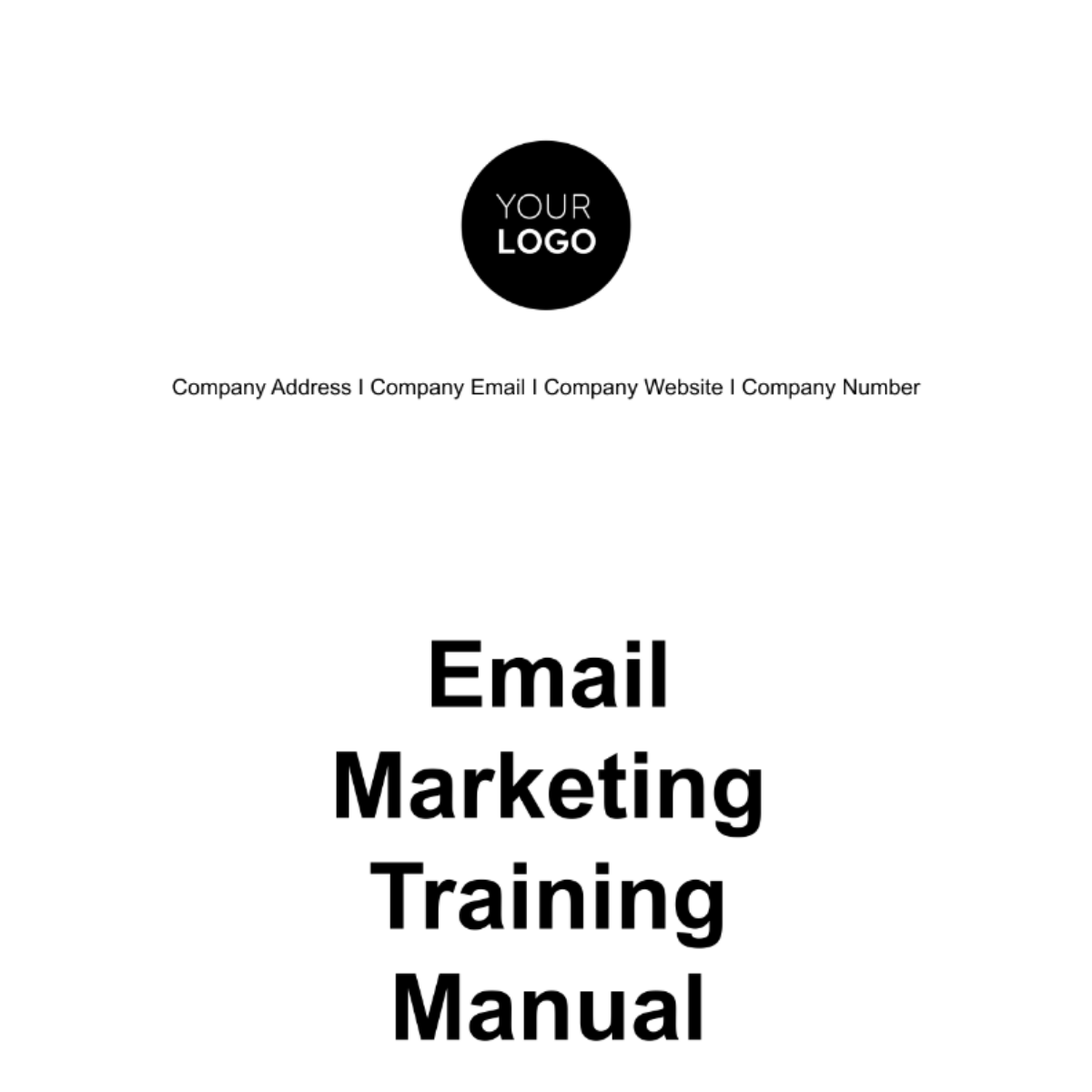
I. Introduction
1. About this Training Manual
Explanation: Welcome to the Email Marketing Training Manual. This manual is designed to equip marketing professionals with the knowledge and skills needed to excel in email marketing. It covers a wide range of topics, from the fundamentals of email marketing to advanced strategies for optimizing campaigns.
Practical Example: Imagine you're a marketing professional at a startup. Your company has been using email marketing, but you want to take it to the next level. This manual will help you understand how to do just that.
Actionable Steps:
Read this manual thoroughly to grasp the essential concepts.
Keep a notebook to jot down key takeaways and actionable insights.
2. The Importance of Email Marketing
Explanation: Email marketing remains a cornerstone of digital marketing. It provides a direct line of communication with your audience, offering a highly effective and cost-efficient way to engage, inform, and convert prospects into customers.
Practical Example: Consider a clothing retailer sending a weekly newsletter to its subscribers with the latest fashion trends and special offers. This is a typical application of email marketing in the retail industry.
Actionable Steps:
Recognize that email marketing can be a game-changer for your business.
Understand how email can help you build lasting relationships with your audience.
3. Target Audience
Explanation: Understanding your audience is crucial for successful email marketing. In this section, we'll delve into identifying the professionals who can benefit most from this training, their roles, and their responsibilities in the marketing domain.
Practical Example: Suppose you work for a B2B company that provides software solutions. Your primary target audience may include IT managers, CTOs, and procurement officers. Knowing this helps you tailor your email campaigns to their specific interests and pain points.
Actionable Steps:
Define your target audience segments.
Create detailed buyer personas for each segment, including their needs and preferences.
II. Email Marketing Fundamentals
4. Defining Email Marketing
Explanation: Email marketing is a digital marketing strategy that involves sending emails to a targeted list of recipients. It is used for various purposes, including promoting products, building brand loyalty, and driving conversions.
Practical Example: Consider a clothing retailer sending a weekly newsletter to its subscribers with the latest fashion trends and special offers. This is a typical application of email marketing in the retail industry.
Actionable Steps:
Understand the basic concept of email marketing.
Explore how email marketing can align with your organization's goals.
5. Benefits and Advantages
Explanation: Email marketing offers several advantages, including cost-effectiveness, scalability, and the ability to reach a global audience. It also allows for personalized communication, making it highly effective for building relationships.
Practical Example: A small online bookstore benefited from email marketing by sending personalized book recommendations to subscribers based on their past purchases. This not only increased sales but also improved customer satisfaction.
Actionable Steps:
List the benefits that email marketing can bring to your organization.
Consider how these benefits align with your marketing objectives.
6. The Role of Email in Modern Marketing
Explanation: In today's marketing landscape, email plays a crucial role. It complements other marketing channels such as social media and content marketing, providing a direct, one-to-one communication channel with your audience.
Practical Example: Imagine you're running a social media campaign to promote a new product. Email marketing can be used to follow up with interested leads, answer their questions, and provide them with more in-depth information.
Actionable Steps:
Recognize the synergy between email marketing and other marketing channels.
Start thinking about how email can be integrated into your existing marketing strategies.
III. Email Marketing Strategy
7. Setting Clear Objectives
Explanation: Before launching an email marketing campaign, it's essential to define clear objectives. These objectives should be specific, measurable, achievable, relevant, and time-bound (SMART).
Practical Example: If your goal is to increase sales, a SMART objective could be: "Achieve a 15% increase in online sales revenue within three months through email marketing campaigns."
Actionable Steps:
Establish specific objectives for your email marketing efforts.
Ensure these objectives align with your company's broader marketing goals.
8. Identifying and Understanding Your Target Audience
Explanation: Your target audience is the group of people who are most likely to engage with your emails and take the desired actions. Identifying and understanding your audience is fundamental to creating relevant content.
Practical Example: For a fitness equipment retailer, the target audience might include fitness enthusiasts, personal trainers, and gym owners. Understanding their fitness goals and pain points helps tailor email content.
Actionable Steps:
Create detailed buyer personas for each segment of your target audience.
Use analytics and customer feedback to continuously refine your understanding.
9. Segmentation and Personalization Strategies
Explanation: Segmentation involves dividing your email list into smaller groups based on specific criteria, such as demographics or behavior. Personalization is the practice of tailoring email content to each segment for higher relevance.
Practical Example: An e-commerce company can segment its list into new customers, frequent shoppers, and lapsed customers. Each segment receives different content: new arrivals for the first group, special offers for the second, and re-engagement emails for the last.
Actionable Steps:
Begin segmenting your email list based on relevant criteria.
Develop personalization strategies that speak directly to each segment.
IV. Building and Managing Email Lists
10. List Building Strategies
Explanation: Your email list is the foundation of your email marketing efforts. Effective list building strategies focus on acquiring and retaining engaged subscribers.
Practical Example: A software company offers a free ebook related to its product. Website visitors can download it in exchange for their email address. This strategy attracts potential customers genuinely interested in the software.
Actionable Steps:
Identify lead generation opportunities related to your products or services.
Implement a sign-up form on your website or landing pages.
11. List Segmentation and Management
Explanation: Segmenting your email list involves categorizing subscribers into distinct groups. Effective list management ensures the integrity of your email database and the quality of your communication.
Practical Example: A nonprofit organization segments its list into donors, volunteers, and event attendees. This segmentation helps tailor messages to each group, leading to higher engagement and donations.
Actionable Steps:
Create clear segmentation criteria.
Regularly clean your list to remove inactive or incorrect email addresses.
12. Best Practices for Opt-In Processes
Explanation: Permission-based marketing is the foundation of ethical email marketing. Best practices include double opt-in methods, clear privacy policies, and transparent consent processes.
Practical Example: An e-commerce business uses a double opt-in process for its newsletter. Subscribers must confirm their subscription by clicking a link in a confirmation email. This ensures they genuinely want to receive emails.
Actionable Steps:
Review your opt-in processes and ensure they meet legal and ethical standards.
Communicate the value of your emails to subscribers during the sign-up process.
V. Email Design and Content
13. Creating Effective Email Templates
Explanation: Email design is critical for engaging recipients. Effective email templates should be visually appealing, mobile-responsive, and consistent with your brand.
Practical Example: An online fashion retailer creates templates with vibrant product images, clear calls to action, and responsive design to cater to mobile users.
Actionable Steps:
Evaluate the design of your current email templates.
Consider how they align with your brand and the expectations of your audience.
14. Crafting Compelling Email Content
Explanation: High-quality content is the heart of a successful email campaign. Content should be relevant, engaging, and valuable to the recipient.
Practical Example: A technology company provides valuable industry insights in its newsletters, positioning itself as an authority in its field. This content engages subscribers who seek knowledge.
Actionable Steps:
Conduct a content audit of your previous email campaigns.
Identify areas where content can be improved for better engagement.
15. Utilizing Multimedia in Emails
Explanation: Including multimedia elements such as images and videos can make emails more engaging. However, it's important to use them strategically without overloading the message.
Practical Example: A travel agency sends a newsletter with stunning destination images and a video highlighting customer testimonials, effectively inspiring wanderlust.
Actionable Steps:
Experiment with multimedia elements in your emails.
Monitor engagement metrics to assess their impact on campaign performance.
VI. Email Deliverability
16. Factors Affecting Deliverability
Explanation: Deliverability refers to the ability of your emails to reach the recipients' inboxes rather than being marked as spam or sent to the junk folder. Several factors impact deliverability, including sender reputation, email authentication, and content quality.
Practical Example: Imagine you're sending emails to promote a new product launch, but your emails are consistently landing in the recipients' spam folders. This can be attributed to factors affecting deliverability.
Actionable Steps:
Assess your current sender reputation.
Implement email authentication protocols like DKIM and SPF.
17. Best Practices for Deliverability
Explanation: To ensure your emails are delivered effectively, it's essential to follow best practices, including maintaining a clean email list, adhering to sender policies, and monitoring your sender reputation.
Practical Example: A retail company experienced a significant drop in open rates because their email list contained many inactive and invalid email addresses. By regularly cleaning their list, they improved their deliverability.
Actionable Steps:
Regularly clean and update your email list.
Monitor your sender reputation using tools like SenderScore.
18. Maintaining a Positive Sender Reputation
Explanation: A positive sender reputation is crucial for email deliverability. It's a measure of your trustworthiness as a sender. Maintaining a good reputation involves sending relevant content and engaging with your subscribers.
Practical Example: A nonprofit organization had a high sender reputation because they consistently sent informative and relevant content, leading to high open and click-through rates.
Actionable Steps:
Review your email content for relevance.
Actively engage with subscribers through personalized content and interactions.
VII. Analytics and Reporting
19. Key Email Marketing Metrics
Explanation: To evaluate the success of your email campaigns, you need to monitor key metrics like open rates, click-through rates, conversion rates, and ROI. These metrics provide insights into the effectiveness of your emails.
Practical Example: A software company improved its email marketing strategy by closely tracking key metrics. They noticed a direct correlation between open rates and the number of downloads for a free trial of their software.
Actionable Steps:
Identify which key metrics are most relevant to your campaign goals.
Implement tracking and reporting tools to monitor these metrics.
20. Analyzing Campaign Performance
Explanation: Analyzing campaign performance involves examining your email marketing data to understand what's working and what's not. This analysis informs future campaigns and optimization efforts.
Practical Example: A travel agency analyzed the performance of their email campaigns over the past year. They found that their highest engagement rates occurred during holiday seasons, leading them to plan more holiday-themed campaigns.
Actionable Steps:
Regularly review email campaign performance reports.
Identify trends and patterns in your data.
21. Using Data for Continuous Improvement
Explanation: Data-driven decision-making is essential in email marketing. Use the insights gathered from your analytics to refine your strategies, segment your audience, and personalize your content for better results.
Practical Example: A restaurant chain noticed that their email subscribers preferred receiving discounts and offers. They used this insight to send targeted promotions to boost foot traffic and sales.
Actionable Steps:
Develop a strategy for using data to optimize your email marketing efforts.
Implement A/B testing to experiment with different approaches and learn from the results.
- 100% Customizable, free editor
- Access 1 Million+ Templates, photo’s & graphics
- Download or share as a template
- Click and replace photos, graphics, text, backgrounds
- Resize, crop, AI write & more
- Access advanced editor
Elevate your email marketing prowess with our Email Marketing Training Manual Template from Template.net. Crafted with industry keywords and designed for maximum impact, this editable and customizable template empowers professionals to excel. Seamlessly integrate your insights using our Ai Editor Tool for unparalleled efficiency and success.
